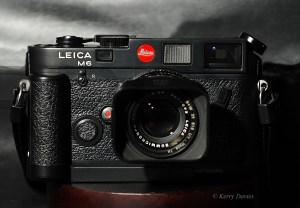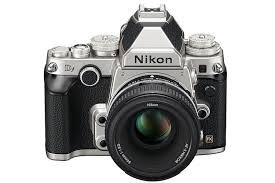 The Leica rangefinder camera has over the years become as legendary as the famous photographers that have become synonymous with using it.
The Leica rangefinder camera has over the years become as legendary as the famous photographers that have become synonymous with using it.
Cartier Bresson,Eve Arnold,Robert Capa,Robert Frank and Vivian Maier to name but a few, have all been associated with its name and the body of work created with this photographic tool has spanned over many decades.
In an era where photographic quality and longevity seem to be taking a back seat, in a world obsessed with the quick fix and inherent obsolescence and yearly upgrades, it seems the ubiquitous smartphone has dominated the requirements of the masses.Even internet service providers are struggling to cater for the deluge of every day images flooding the internet and it is allegedly rapidly running out of capacity in its current form.
Interestingly there appears to be a rekindling of interest by many in the younger generation that have read and learned about the photographic legends of the golden era of photojournalism and are kicking back against the digital world that cocoons them.Many are seeking to learn more about the old techniques of dark room printing and the power and minimalism of black and white photography.
Film appears to be making a come back and even the film industry is turning away from the current vogue to use video and returning to celluloid in a bid to recapture that classic 35mm look.Such is rumoured to be the case in that of the new Star Wars Film currently being filmed at Pinewood Studios in the UK.
The legendary Kodak film Tri-X, famous for use by such photographers as David Bailey,Don McCullin,Anton Corbijn and Sebastiao Salgado,is also gathering resurgence of interest,especially for those seeking that natural film grain and rich blacks and whites that add character and depth to an image,a complete contrast to the digital, rather clinical, grain free effects of todays digital offerings.
Indeed a close friend who had a fridge load of date expired film has found that it was purchased enthusiastically on ebay by fans of Lomography who love the psychedelic effects of the film in their Holga and Lomo cameras who cannot get enough of it.
Many are now stepping off the digital merry go round and seeking out classic film cameras to shoot their important pictures and memories, after all its easy to scan a negative for internet purposes and you can keep a negative for archive purposes for hundreds of years, but when your hard drive dies or becomes obsolete thats a big problem,who can remember zip disks?
Over the decades I have used many cameras,but one that I have a special fondness for is the Leica M6 with a 35mm F2 Summicron IV pre aspherical.
This lens has become known as the “King of Bokeh” among rangefinder aficionados.
A true jewel of a lens,this optic is possessed of a unique set of characteristics that almost give the lens a life of its own.
When shot wide open this lens gives an extraordinary creamy bokeh(Japanese Bo-ke),a term coined by the japanese to describe the out of focus or blurry background effect when a wide aperture is selected.It also gives a wonderful glow in the specular highlights and a full range of tones that really jump out of the picture giving an almost 3D quality frequently described as the Leica glow.It is almost as if the lens maker has dropped a tiny pipet of bottled nostalgia onto the front lens coating and all images suddenly seem in some way like a captured frame from a dream sequence.
Mechanically the optic really is a dream.It has beautiful click stops,silky smooth focus and a full array of depth of field settings,enabling a photographer to take full advantage of setting hyper focal distance and pre-setting the camera for street photography.
I also like the 90mm Elmarit f2.8 which is ideal when you need that extra little bit of reach or a tight portrait and the gorgeous Elmar 50mm f2.8 is a cracking pop out pancake lens in the old tradition and style for keeping in a discrete pocket.
In modern times the Leica M6 body may not seem the most ergonomically designed of film cameras and the loading procedure can be a little bit more time consuming than opening the back door of a typical 35mm film SLR, however in my opinion this is not what rangefinder photography is about.If you require a camera to rattle off 12fps and send the images directly online via a wifi connection to your laptop then you are looking in the wrong place.However if you are the kind of person for whom the internet is a mere after thought and you want a small discrete camera that can be hand held to stunningly low shutter speeds and which is whisper silent and doesn’t draw attention,and if you enjoy doing your own black and white prints or thrill when you get back your prints from a lab,then this could be for you.
The Leica rangefinder is for people who prefer to smell the roses and enjoy life at a more laid back pace while taking the scenic route.It is for those who may relish the pleasure of sitting in a cafe watching the world go by while enjoying the pleasure of winding on the gears of a classic precision photographic instrument,almost like a swiss watch,that instills you with confidence in its design and the quality of its build and optics.The enjoyment of following a classic ritual from an age of elegance that makes you feel that taking pictures with it should be more thoughtful and considered.
In essence,shooting a Leica rangefinder eventually becomes an almost Zen like experience as one can see all the action prior to the subject entering the frame,preset the focus using hyper focal distance and use experienced judgement to set the light levels.Combining all these elements successfully creates an almost instantaneous extension of your mind and eye and culminates in a single understated whisper quiet click!
They are such mechanical wonders that they do not even require batteries.In my opinion thats quite something in this modern age.
It takes practice and discipline to master this technique of course,but the reward is there for those patient enough.
Indeed Leica cameras and their lenses are not cheap and seeking out the classic lenses is a costly affair.However of all the cameras on the market they are clearly an investment and you will almost certainly find that the camera or lens you buy either holds its value or becomes more valuable as the years pass by,the problem is that you probably will not want to sell it anyway as it becomes very much a part of your life.
There is also something pleasing knowing that in all likelihood that rangefinder will still be shooting when those digital wonders are are long gone into the annals of upgrade history or are relegated to the status of expensive paperweights.Indeed a battered and bronzed Leica with years of usage,has a certain beauty and appeal to it that is quite frankly priceless.

































